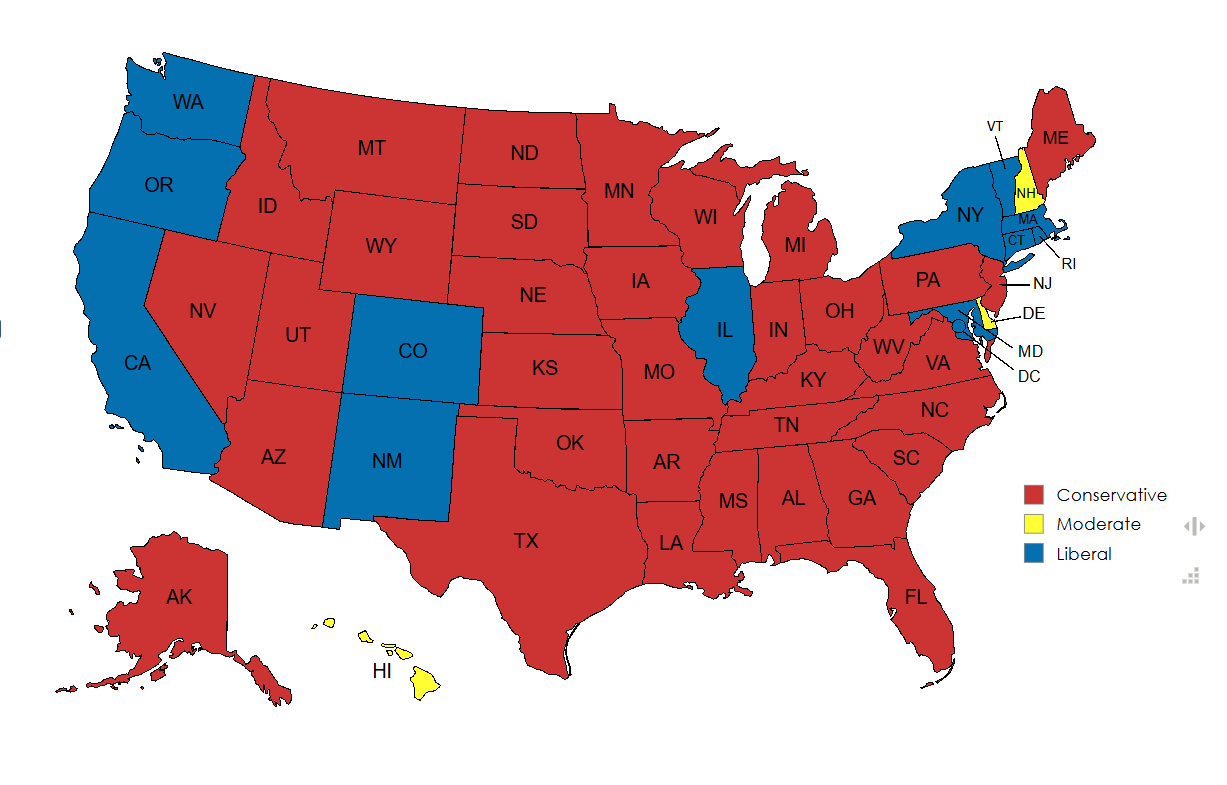Map of Popular Political Ideologies by US State


Alex Cartwright
Senior Cartographer & GIS Specialist
Alex Cartwright is a renowned cartographer and geographic information systems specialist with over 15 years of experience in spatial analysis and data...
Geographic Analysis
What This Map Shows
The visualization titled "Single Most Popular Self Described Political Ideology by US State" offers a captivating snapshot of the political landscape across the United States. It illustrates how residents in each state identify their political beliefs, categorizing them into various ideologies such as liberal, conservative, moderate, or libertarian. This map not only highlights the predominant political leanings in each state but also provides insight into the cultural and social dynamics that shape these ideologies.
Deep Dive into Political Ideologies
Political ideology refers to a set of beliefs about the proper order of society and the role of government. In the context of the United States, these ideologies often fall into distinct categories. Conservatives typically advocate for limited government intervention, traditional social values, and free-market principles. Liberals, on the other hand, tend to support social equality, environmental protection, and more robust government programs aimed at addressing social issues.
Interestingly, the distribution of political ideologies varies significantly across the nation. For instance, states like California and New York prominently feature liberal ideologies, reflecting their diverse populations and urban centers. In contrast, states such as Alabama and Wyoming lean more conservative, often rooted in their historical and cultural contexts, including religious influences and economic factors.
A key takeaway from the map is the geographical clustering of political beliefs. Urban areas often lean liberal as they tend to attract younger, more diverse populations who may prioritize progressive issues such as climate change and social justice. Conversely, rural areas frequently align with conservative ideologies, emphasizing personal responsibility, gun rights, and traditional values.
Moreover, the ideological spectrum in the U.S. is not merely black and white. Many individuals identify as moderates, representing a blend of both liberal and conservative views. This nuance is essential to consider, as it illustrates the complexity of political identity in America. According to data from Morning Consult, approximately 36% of voters identify as moderate, a figure that suggests significant portions of the population may not strictly fit into the traditional liberal or conservative camps.
Regional Analysis
Examining this ideological map reveals striking differences across various regions of the United States. For instance, the West Coast, particularly states like Oregon and Washington, showcases a strong liberal presence. This is in part due to the influence of technology-driven economies and progressive social movements. Interestingly, Oregon has emerged as a bastion of liberal ideology, with a significant portion of its population advocating for environmental policies and social equity.
Moving to the Midwest, states such as Illinois and Minnesota present a more mixed ideological landscape. While urban centers like Chicago lean liberal, rural areas may hold conservative views, creating a patchwork of beliefs within these states. In contrast, the South remains predominantly conservative, with states like Texas and Florida showcasing strong Republican affiliations. However, it's worth noting that urban areas within these states, such as Austin and Miami, are increasingly leaning liberal, reflecting demographic shifts and changing cultural values.
Significance and Impact
Understanding the distribution of political ideologies across the United States is crucial for several reasons. Firstly, it influences electoral outcomes and policy decisions at both state and national levels. For instance, the ideological leanings of states can determine the balance of power in Congress, impacting legislation on critical issues like healthcare, education, and climate change.
Moreover, as the U.S. population continues to evolve, driven by immigration and urbanization, so too will the political landscape. Trends such as the increasing diversity of younger generations may lead to a shift toward more liberal ideologies in traditionally conservative regions. Have you noticed how rapidly some states are changing their political affiliations? This evolution could significantly impact elections in the coming years, making it essential to monitor these ideological shifts.
In conclusion, the map illustrating self-described political ideologies by state serves as a vital tool for understanding the complexities of American political identity. By examining the ideological trends, regional variations, and their implications, we gain valuable insights into the future of American politics and society as a whole.
Visualization Details
- Published
- October 10, 2025
- Views
- 6
Comments
Loading comments...